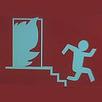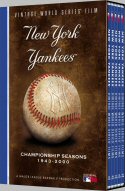|
Larry Mahnken and SG's | ||
|
| Replacement Level Yankees Weblog |

|
|
"Hey, it's free!" | ||
|
Larry Mahnken and SG's | ||
|
| Replacement Level Yankees Weblog |

|
|
"Hey, it's free!" | ||
|
Featuring: Larry Mahnken SG sjohnny TVerik Sean McNally Fabian McNally John Brattain  
The New York Yankees Vintage World Series Films DVD Set, available from A&E. Yankees Tickets World Series Tickets MLB All Star Tickets NFL Tickets Purchase your Onlineseats.com is your #1 source for MLB tickets, NY Mets Tickets, Cubs Tickets, Yankees Tickets, Red Sox Tickets, Giants Tickets, Astros Tickets, Angels Tickets, Phillies Tickets.
Buy all your MLB Tickets,
Laser Keyboard Brazil Flowers TickCo.com for premium New York Yankees Tickets Boston Red Sox Tickets Chicago white Sox Tickets A's Tickets Angels Tickets New York Mets Tickets St Louis Cardinals Tickets Cubs Tickets Dodgers Tickets Worldticketshop Football Tickets Concert Tickets Tennis Tickets Rugby Tickets Formula 1 Tickets "I'm not a pessimist, I'm an optimist. Things are really worse than I say they are." - Steve South

04/01/2003 - 04/30/2003 05/01/2003 - 05/31/2003 06/01/2003 - 06/30/2003 07/01/2003 - 07/31/2003 08/01/2003 - 08/31/2003 09/01/2003 - 09/30/2003 10/01/2003 - 10/31/2003 11/01/2003 - 11/30/2003 12/01/2003 - 12/31/2003 01/01/2004 - 01/31/2004 02/01/2004 - 02/29/2004 03/01/2004 - 03/31/2004 04/01/2004 - 04/30/2004 05/01/2004 - 05/31/2004 06/01/2004 - 06/30/2004 07/01/2004 - 07/31/2004 08/01/2004 - 08/31/2004 09/01/2004 - 09/30/2004 10/01/2004 - 10/31/2004 11/01/2004 - 11/30/2004 12/01/2004 - 12/31/2004 01/01/2005 - 01/31/2005 02/01/2005 - 02/28/2005 03/01/2005 - 03/31/2005 04/01/2005 - 04/30/2005 05/01/2005 - 05/31/2005 06/01/2005 - 06/30/2005 07/01/2005 - 07/31/2005 08/01/2005 - 08/31/2005 09/01/2005 - 09/30/2005 10/01/2005 - 10/31/2005 11/01/2005 - 11/30/2005 12/01/2005 - 12/31/2005 01/01/2006 - 01/31/2006 02/01/2006 - 02/28/2006 03/01/2006 - 03/31/2006 04/01/2006 - 04/30/2006 05/01/2006 - 05/31/2006 06/01/2006 - 06/30/2006 07/01/2006 - 07/31/2006 08/01/2006 - 08/31/2006 09/01/2006 - 09/30/2006 10/01/2006 - 10/31/2006 LINKS Yankees Sites and Columnists Nomaas.org General Baseball Sites & Columnists Rotoauthority.com The Book Blog - Playing the Percentages in Baseball(Tango, MGL, Dolphin) Yankees Blogs Almost Perfect Baby Bombers Baseball Mania Bronx Banter Dugout News Eephus Pitch Fire Joe Torre Blog Here Comes Number 27 High and Tight Lohud Yankees Blog No Sense Worrying Soft Hands The Sporting Brews The Stat Boy of the Empire Was Watching Yankees Chick Yankees Fans in Foreign Lands Yanks Blog Look what people have to say about Larry Mahnken's commentary! "Larry, can you be any more of a Yankee apologist?.... Just look past your Yankee myopia and try some objectivity." "Mr. Mahnken is enlightened."
"Wow, Larry. You've produced 25% of the comments on this thread and
said nothing meaningful. That's impressive, even for you."
"After reading all your postings and daily weblog...I believe you have truly become the Phil Pepe of this generation. Now this is not necessarily a good thing."
"you blog sucks, it reeds as it was written by the queer son of mike lupica and roids clemens. i could write a better column by letting a monkey fuk a typewriter. i dont need no 181 million dollar team to write a blog fukkk the spankeees"
"i think his followers have a different sexual preference than most men"
"Boring and predictable."
"Are you the biggest idiot ever?"
"I'm not qualified to write for online media, let alone mainstream
media."
This site is best viewed with a monitor.
|
Disclaimer: If you think this is the official website of the New York Yankees, you're an idiot. Go away. Tuesday, February 28, 2006
Spring Training Notes - 2/28 by SG
I'm taking a break from the looking ahead stuff for a day or two, so here's the lowdown on camp Yankee.
Sunday, February 26, 2006
Looking Ahead to 2006 - Third Base by SG
Alex Rodriguez is the object of scorn by people everywhere, because he has committed the crime of being remarkably talented and very well-compensated for that talent. It is my opinion that the team owners use their media mouthpieces to ridicule Rodriguez for having had the audacity to sign the most lucrative contract in baseball history, ignoring the fact that it was one of them that offered it to him in the first place, in a thinly veiled attempt at keeping other players' contract demands down. Then the unthinking masses follow suit because they have been conditioned to by the Mike Lupicas of the world. It's easy enough to attack the character of Rodriguez, because it's pretty damn hard to attack his baseball ability, which should be the only thing that matters to sports fans.
Thursday, February 23, 2006
Looking Ahead to 2006 - Shortstop by SG
Derek Jeter is one of the most polarizing players in baseball. Scouts rave about his defense while defensive metrics ridicule it. Some Yankee fans and Tim McCarver laud him as clutch, others see that his performance in the postseason is not that dissimilar to his regular season performance. However, there's no doubt that he's a very good player and likely a first ballot Hall of Famer on his current trajectory, whether he is overrated or not.
Wednesday, February 22, 2006
Looking Ahead to 2006 - Second Base by SG
Looking Ahead to 2006 - Second Base
Tuesday, February 21, 2006
Looking Ahead to 2006 - First Base by SG
One of the biggest question marks going into to 2005 was what the Yankees could expect from Jason Giambi. Giambi really struggled to start the year, looking completely lost at the plate, drawing walks and doing little else, and drawing complaints from people who felt Ruben Sierra should be starting over him, and mocking derision from the anti-steroids crowd. "This proves that Giambi would have been nothing without steroids!"
Sunday, February 19, 2006
Looking Ahead to 2006 - Yankee Catchers by SG
With pitchers and catchers now in camp, I figured I should do some kind of previews for the Yankees. I'll start with the catchers.
Friday, February 17, 2006
Spring Training Notes - 2/17 by SG
Well, pitchers and catchers have reported, which means no shortage of puff pieces in the New York virtual fish wraps.
Thursday, February 16, 2006
Sports Bloggers Live Interview by SG
I did an interview on Sportsbloggers live which can be listened to here for anyone who wants to make fun of my voice. Nothing too earth-shattering here, it's about 4 minutes in.
Wednesday, February 15, 2006
Newsday: Pavano hurting again by SG
SI.com - Verducci: Jeter, not Damon, should bat first in Yankees' lineup by SG
Sunday, February 12, 2006
Diamond Mind Projections part two, PECOTA by SG
I hope most of you enjoyed MGL's interview and subsequent discussion in the last entry. Thanks again to MGL for his time, and I heartily recommend picking up The Book. You'll learn a bit about baseball, and help support Retrosheet.
Wednesday, February 08, 2006
An Interview with MGL by SG
Mitchel Lichtman, better known in the on-line baseball community as MGL, is one of the foremost experts in the field of sabermetrics today. He is best known as the inventor of UZR (Ultimate Zone Rating), the most advanced form of defensive statistical analysis currently available. Although he now consults for a major league baseball team and UZR has become proprietary, he is still willing to share some of the results every year as well as his other methods of player evaluation. MGL has collaborated with Tom Tango and Andy Dolphin to write a new book about baseball strategy called The Book, about which more information can be found here. MGL agreed to do a collaborative interview with Replacement Level Yankee Weblog and nomaas.org to discuss the upcoming book as well as some general Yankee questions.
Monday, February 06, 2006
Yankees vs. Red Sox - Positional Comparison by SG
Chofo asked me to do a positional comparison of the Red Sox and Yankees. While I try to ignore the Red Sox as much as possible, and the last thing I want to do is attract Red Sox fans here, I'm suffering from blogger's block anyway, so here it is.
NY POST: MEL JOININ' YANKS AS 'CELEB' COACH by SG
Thursday, February 02, 2006
MLB.com - Jays ready to rule the roost by SG
MLB.com's predicting the Blue Jays to win the AL East according to the article linked above. While I think it's possible, a lot has to break right for them and wrong for the Yankees and Boston for them to actually do it.
| |||||||||